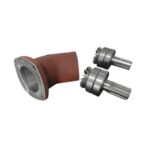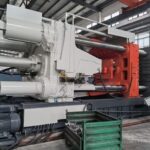Introduction to CNC Machining
CNC (Computer Numerical Control) machining stands as a cornerstone in modern manufacturing. This comprehensive guide aims to demystify CNC, covering its essential aspects and diverse applications.

Hi, I’m Lai Haijiang, owner of Yongzhu Die Casting since 2004. Passionate about aluminum die-casting? Let’s chat! We craft custom aluminum parts for various industries and offer both manufacturing and wholesale services. Interested in being our overseas agent? Drop me an email with your ideas, and I’ll get back to you swiftly!
What is CNC Machining?
Definition: CNC machining is a process where computer software dictates the movement of factory tools and machinery, offering precision, efficiency, and flexibility.
Key Components:
- CNC Machines: Ranging from mills to lathes and routers.
- Control Software: The programming that drives machine operations.
- Tooling: The cutting, drilling, or shaping tools used in the process.
Benefits of CNC Machining
1. Enhanced Precision: CNC machines produce parts with high accuracy and consistent quality.
2. Increased Efficiency: Automated processes lead to faster production times and reduced labor costs.
3. Versatility: Capable of handling a variety of materials and complex designs.



Applications Across Industries
CNC machining is pivotal in industries like aerospace, automotive, medical, and more, for applications ranging from prototyping to full-scale production.
Advanced CNC Technologies
The evolution of CNC includes advancements like 5-axis machining, live tooling, and integration with AI and IoT for smarter manufacturing.
Conclusion
CNC machining is a dynamic and evolving field, playing a critical role in the modern manufacturing landscape. Its ability to produce complex parts with high precision makes it indispensable in various industries.
Drop me an email with your ideas, and I’ll get back to you swiftly!

















